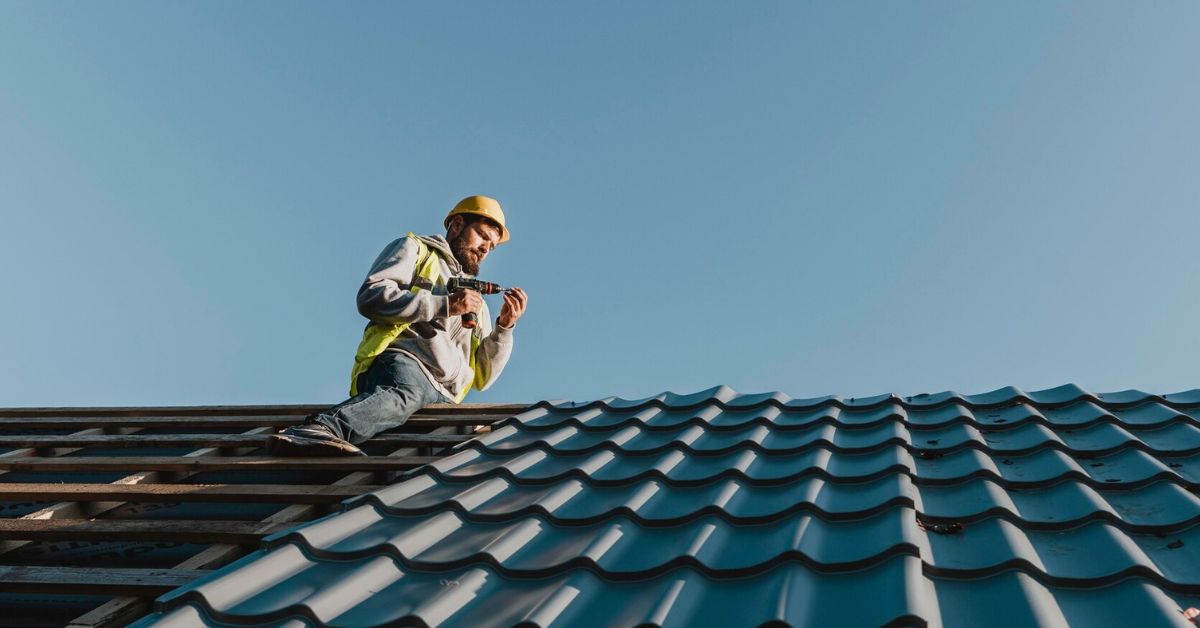A roof inspection may not be the most exciting part of homeownership, but it’s crucial to maintaining your property’s condition and value. Over time, weather, temperature shifts, and simple wear and tear can cause damage that isn’t always visible from the ground. That’s why having a contractor perform a thorough, on-site roof inspection can make a real difference. It gives homeowners insight into the current state of their roof and identifies potential problems before they become costly repairs. We will explore what happens during a roof inspection, what contractors look for, and how it benefits you in the long run.
Expectations of a roof inspection
Initial Walkthrough and Exterior Evaluation
When a roofing contractor arrives for an on-site inspection, the first step is typically an exterior walkthrough of the property. This process allows them to understand the roof’s structure, pitch, age, and overall design. By viewing the home from different angles and distances, they can spot signs of damage or concern that may not be visible from a single vantage point. Common red flags include missing shingles, discoloration, sagging lines, or apparent punctures.
A contractor may also look at the condition of the gutters, downspouts, and fascia boards since these elements are directly connected to the roof’s performance. They’ll often take photographs or notes to document their findings during this time. This helps ensure that nothing is missed and gives the homeowner a visual reference for any problems identified later. For roofs with visible signs of aging or neglect, the inspector may already have a good idea of what types of issues to expect before ever stepping onto the roof itself.
In some cases, weather conditions can delay the inspection of specific details. Still, a reputable contractor from Red Stick Roofing of Louisiana will return when safe or continue with what can be assessed from the ground and ladders. The initial walkaround also identifies access points and evaluates the safety of climbing onto the roof if needed. Overall, this phase of the inspection lays the groundwork for a more detailed assessment and helps determine the level of inspection required based on the home’s condition and the homeowner’s concerns.
Detailed Inspection of Roof Surface and Materials
After completing the exterior assessment from the ground, the contractor will typically climb onto the roof—weather and safety permitting—to conduct a close-up inspection of the surface and materials. This step is crucial because many forms of damage, such as cracked shingles, soft spots, and improper flashing, can go unnoticed unless viewed up close. The inspector will walk carefully across different roof sections, observing how the materials respond underfoot. Spongy or uneven areas can indicate water damage or rot beneath the surface.
The contractor will also inspect protrusions such as chimneys, skylights, and vents, where leaks are most likely to occur. Flashing, the metal or composite material that seals these areas, must be intact and properly sealed to prevent water intrusion. In this part of the inspection, even minor issues like nail pops or granule loss from shingles are noted, as they can become more significant problems over time. For roofs with tiles, the inspector checks for cracks or shifting pieces, while corrosion or loose fasteners may be the primary concern on metal roofs. Regardless of the material, the contractor is looking for anything compromising the roof’s ability to keep water out and maintain structural integrity.
They may also check the ridge caps and valleys, which commonly experience high water flow and stress. The ventilation system is another key focus, as it significantly regulates attic temperature and prevents moisture buildup. Poor ventilation can lead to heat damage, mold growth, and reduced lifespan for roofing materials. If the home has an attic, the inspector may also ask to examine it, especially if there are signs of leaks or insulation issues on the roof itself. By combining observations from above and below, the contractor builds a complete picture of the roof’s health, leading to more accurate recommendations.
Discussion of Findings and Recommended Next Steps
Once the physical inspection is complete, the contractor will review their findings with the homeowner. This conversation is often just as crucial as the inspection itself because it helps clarify what was observed, what it means, and what should be done about it. Most contractors will provide a written report or a digital summary, often accompanied by photos taken during the inspection. These visuals help illustrate precisely where the issues lie and how severe they are. The contractor will explain the condition of the roofing materials, whether repairs are needed, and if any immediate concerns require attention.
In cases where the roof is in relatively good condition, they suggest routine maintenance or keeping a close eye on specific areas over time. If the inspection reveals more serious problems like active leaks, failing flashing, or significant material wear, the conversation may shift to repair timelines and cost estimates. Some contractors may recommend a follow-up visit, mainly if repairs are complex or insurance involvement is needed. This part of the process also allows homeowners to ask questions and better understand the roof’s lifespan and how to prepare for future upkeep.
Transparency is essential here, as homeowners should walk away with a clear understanding of what to expect and what steps they should consider next. Communication following the inspection helps ensure that the homeowner can make informed decisions and address problems proactively rather than reactively. Contractors may also offer advice on seasonal maintenance or signs to watch for between inspections, empowering homeowners to monitor their roofs more confidently. In this way, the final inspection step becomes the bridge between assessment and action, giving the homeowner a road map for keeping their roof in solid condition.
A professional roof inspection provides more than just a checklist of issues—it offers insight into the condition, performance, and longevity of one of the most essential parts of your home. Through a structured process that includes exterior evaluation, close-up assessment, and direct communication, contractors help identify problems early and create a resolution plan. Homeowners can approach the process with greater confidence and clarity by knowing what to expect during an on-site inspection. Whether it leads to simple maintenance or more significant repairs, a thorough inspection is a smart investment in your home’s protection and value.











